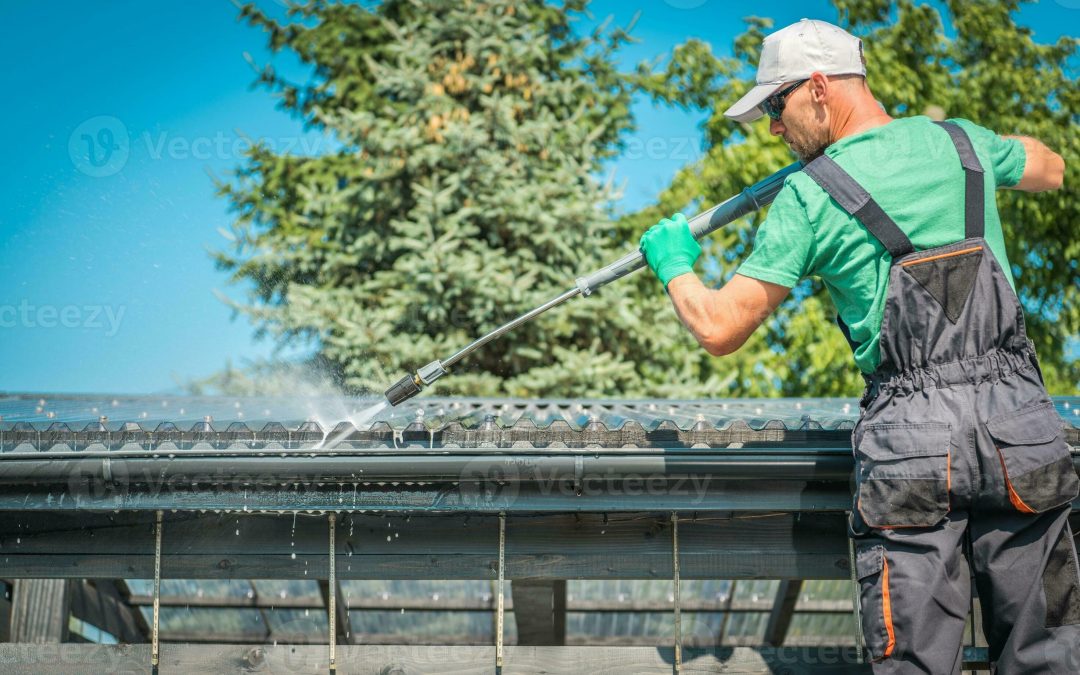Winter in Loudoun County can bring heavy snow, ice, and freezing temperatures, all of which can take a toll on your roof and gutters. Proper winterization is key to protecting your home from potential damage and ensuring that your roof and gutter systems continue to function effectively throughout the season. Below are essential steps you can take to winterize your roof and gutters in Loudoun County, helping to prevent costly repairs and maintain your home’s integrity during the colder months.
1. Inspect and Repair Your Roof
Before the cold weather hits, it’s essential to inspect your roof for any signs of damage or wear. Even minor issues can be exacerbated by winter storms, causing leaks or more serious structural damage.
- Check for Missing or Damaged Shingles: Missing or damaged shingles can leave your roof vulnerable to leaks, particularly when rain or snow melts. Replace or repair any compromised shingles to prevent water from seeping into your home.
- Inspect Flashing and Venting: Flashing around chimneys, skylights, and vents should be intact to prevent water from infiltrating. Ensure there are no gaps, cracks, or rust spots. Make repairs as needed.
- Examine the Roof Decking and Structure: Check for any sagging or weak areas on your roof’s structure. Any instability could worsen under the weight of heavy snow or ice, so it’s best to address it early.
2. Clear Gutters and Downspouts
Clogged gutters can cause a variety of problems, especially during the winter months when rainwater, melting snow, and ice are present. When gutters are blocked, they can’t properly direct water away from your home, leading to water damage, ice dams, and even foundation issues.
- Clean Out Debris: Remove leaves, twigs, dirt, and other debris that may have accumulated in your gutters. This will allow water to flow freely through your gutters and downspouts.
- Ensure Proper Downspout Function: Make sure your downspouts are clear and direct water away from your home’s foundation. If water backs up in your gutters, it can freeze and create ice dams, which can cause extensive damage to your roof and walls.
- Consider Gutter Guards: Installing gutter guards can help prevent debris buildup and reduce the frequency of gutter cleaning. This will save you time and effort during the winter months.
3. Prevent Ice Dams
Ice dams are one of the most common winter roofing problems. They form when warm air from the attic melts snow on your roof, and the water refreezes at the roof’s edge, creating a barrier that traps water on the roof. Over time, this trapped water can cause leaks, damage to shingles, and even structural issues.
- Improve Attic Insulation and Ventilation: Make sure your attic is properly insulated to prevent warm air from escaping and melting the snow on your roof. Additionally, ensure there is proper ventilation in the attic to help keep the roof cool and prevent ice dams from forming.
- Use a Roof Rake: After a heavy snowstorm, carefully use a roof rake to remove excess snow from the edges of your roof. This can help prevent ice dams by ensuring that snow does not build up and refreeze.
- Consider Heating Cables: For areas that are particularly prone to ice dams, consider installing roof heating cables. These cables can be placed along the roof’s edge and in the gutters to prevent ice buildup.
4. Trim Overhanging Branches
Winter storms, especially those with snow or ice, can weigh down tree branches, causing them to break and fall onto your roof. This can lead to significant roof damage or gutter problems.
- Trim Back Overhanging Trees: Before winter, inspect the trees around your home and trim any branches that hang over your roof. This will help reduce the risk of damage from falling limbs during a snowstorm or ice storm.
- Remove Dead or Weak Branches: If you have any dead or weak tree branches, these should be removed as they are more likely to break in winter weather.
5. Seal Gaps and Leaks Around the Roof
Cold air can enter your home through small gaps or cracks in your roof, leading to heat loss and increased energy bills. It’s important to address these areas before winter weather sets in.
- Check for Leaks Around Roof Fixtures: Inspect areas around chimneys, skylights, and vents for any signs of gaps or leaks. Use roofing sealant or caulk to fill any cracks and prevent cold air from entering your home.
- Ensure Proper Flashing: Check that flashing around roof penetrations (like chimneys and vent pipes) is properly sealed. If any flashing is damaged, it should be replaced or repaired to avoid water infiltration during storms.
6. Inspect Gutters for Proper Pitch
For your gutters to function properly in the winter, they need to have the correct pitch to allow water to flow towards the downspouts. Improperly pitched gutters can cause water to pool and freeze, which can damage your roof, gutters, and the surrounding areas.
- Check Gutter Slope: Ensure that your gutters have a slight slope towards the downspouts. This will ensure that water flows efficiently and doesn’t accumulate in the gutters, where it could freeze and cause damage.
- Make Adjustments if Necessary: If you notice areas where water seems to pool, you may need to adjust the pitch of your gutters. A professional can help you make these adjustments if needed.
7. Prepare for Winter Storms
Even after taking preventive measures, winter storms can still cause damage. It’s important to have a plan in place for dealing with winter weather and to know what to do in case of damage.
- Have Emergency Supplies Ready: Keep basic tools and materials on hand for temporary repairs in case of roof or gutter damage during a winter storm. This may include roofing cement, a tarp, and a ladder.
- Know How to Safely Remove Snow and Ice: If you experience heavy snow or ice buildup on your roof, it’s important to know how to safely remove it. Use a roof rake with a long extension pole to carefully clear snow from the roof without causing damage.
- Contact a Professional: If you are unsure about how to prepare your roof and gutters for winter, or if you notice significant damage, don’t hesitate to contact a professional roofer or gutter specialist to inspect and address any issues.
Conclusion
Winterizing your roof and gutters is essential for protecting your home during the harsh winter months in Loudoun County. By following these steps to inspect, clean, and maintain your roof and gutter systems, you can prevent costly damage and ensure your home stays safe, dry, and energy-efficient throughout the winter season. Regular maintenance and proactive measures will help you avoid major issues and provide peace of mind when the next snowstorm or ice event arrives.
If you’re ready to take the stress out of gutter maintenance, contact us today for a free inspection. Let us show you why we’re the best in the business!

